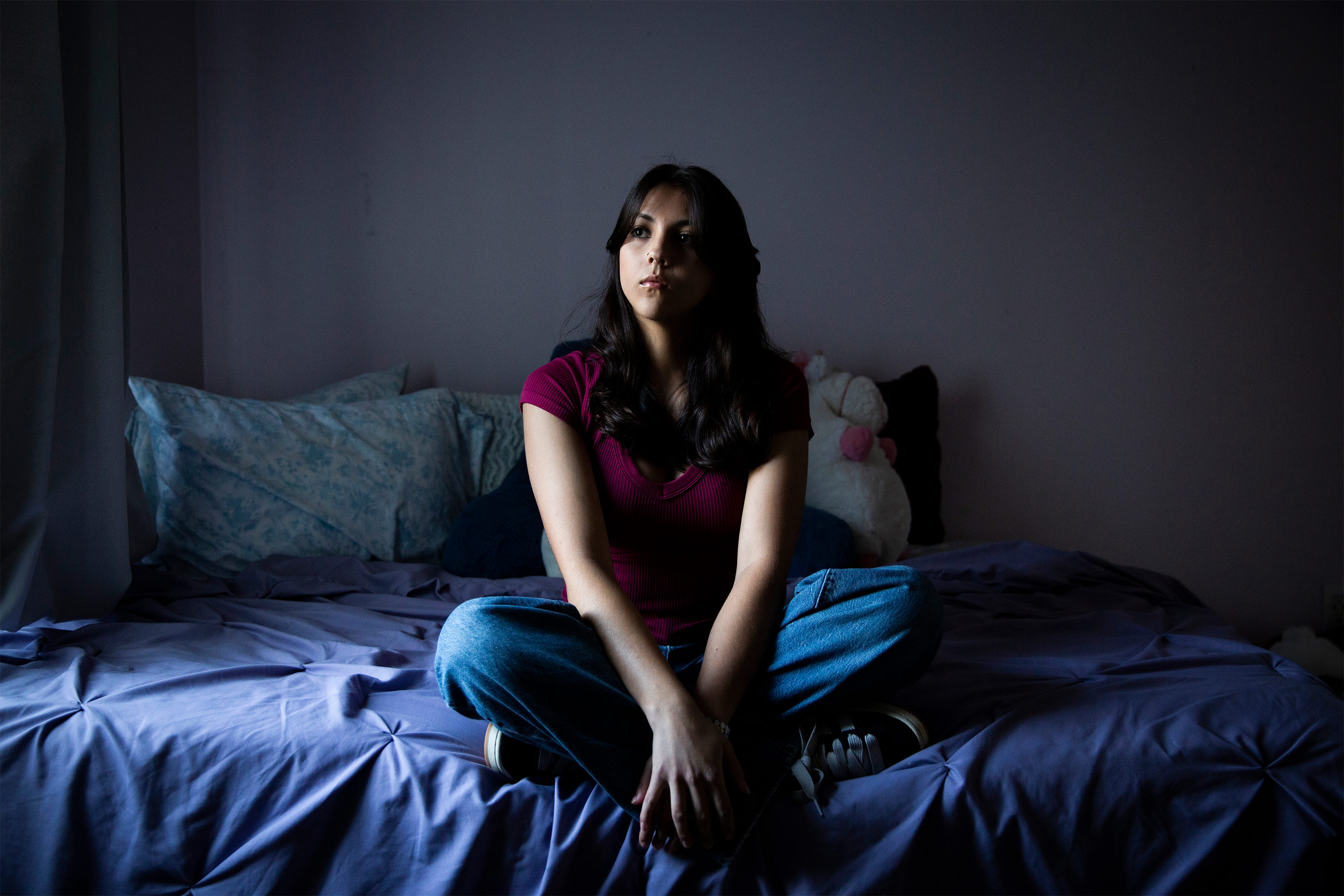Nothing compares to the perfect summer run. All winter, even through spring, I sustain myself with the dream of jogging in shorts down a dry, grass-lined path, unencumbered by puddles or black ice. But that dream is becoming more elusive. Now, in mid-June, I already dread the prospect of being outside past about 7:30 in the morning. Summer is set to officially start on Thursday, and the coming season looks to be, once again, marred by record-breaking temperatures, prolonged heat waves, and devastating fires. As climate change pushes the environment to new and more frequent extremes, exercising outdoors in the spring and summer is getting—to use a technical term—grosser.
Summer has long been a time of year when people are more active, by as much as 20 percent, according to one study; millions of Americans camp, hike, jog, fish, or bike outside, taking advantage of the longer days, the respite from school, the riot of active wildlife and greenery. But being outdoors is starting to become synonymous with dangerous exposure, and the effects of the climate crisis appear to be reducing levels of physical activity around the world. Last summer in the U.S., hazardous air and sweltering temperatures closed hiking trails and cloistered campers indoors; marathons and triathlons—designed to push a notoriously stubborn bunch of athletes to their limits—were canceled too. And with the Summer Olympics in Paris fast approaching, some experts are worried about the toll of extreme heat—and about the strength of the contingency plans in current regulations and guidelines.
Based on the trajectory the world is on, summer extremes dangerous enough to compromise outside activities are “going to be happening more and more,” Carol Ewing Garber, an exercise physiologist at Columbia University, told me. People hoping to enjoy the outdoors will have to choose between chasing the perks of nature and minimizing exposure to new environmental extremes.
The clearest risk of exercising on hot days is heat stroke. When the body’s core temperature rises, toxins leak out of the gut, sparking inflammation throughout the body; the heart strains to deliver blood; the kidneys falter as fluid levels fall. What starts off as mild heat exhaustion—headaches and dizziness—can quickly transform into a serious bout of vomiting, delirium, cramps, and fainting, signs that the condition could soon turn fatal.
Each person’s threshold for too much heat, though, depends on factors such as baseline health, level of training, exertion, and precautions against overheating, Michael Sawka, an environmental physiologist at the Georgia Institute of Technology, told me. According to the National Weather Service, once the wet-bulb globe temperature—which takes into account humidity, wind, cloud cover, even the angle of the sun—crests above 90 degrees Fahrenheit, just 15 minutes of working or exercising in direct sunlight can seriously stress the body. For some official sporting events, such as road races—during which athletes go particularly long and hard—the American College of Sports Medicine (ACSM) has urged organizers to cancel or recommend voluntary withdrawal at wet-bulb temperatures above 82 degrees Fahrenheit. And because humidity stifles the ability of sweat to cool the skin, muggy days are a worry even when temperatures don’t seem that high—especially for populations with underlying health conditions. In New York, for instance, “anything above 80 [degrees], really, we kind of get concerned,” Sonika Patel, a cardiologist at NewYork-Presbyterian, told me.
Human bodies can also adapt to tolerate more heat—often, within just days. As people repeatedly expose themselves to higher temperatures, the amount of plasma in the blood increases, making it easier for the heart to shunt blood to the skin to dissipate heat; the sensors that trigger sweating recalibrate to make cooling more efficient. In laboratories, researchers frequently document athletes who have trained themselves to exercise with core body temperatures cresting regularly above about 105 degrees Fahrenheit. Still, these tricks aren’t cure-alls: The body can only produce so much sweat at a time, for instance.
Behavioral hacks to beat the heat have their limits too. Many guides for exercising during heat waves recommend tricks such as wearing airy clothing, working out in the shade, keeping hydrated, and scheduling activities to avoid the hottest hours of the day. But fabrics can get only so loose and light; shade isn’t always available or consistent; adequately hydrating requires heeding cues beyond thirst. And as average temperatures climb higher and higher, many of the mornings and evenings that offered respites from the heat are no longer cool enough to be comfortable. One day last summer, Phoenix logged a low of 97 degrees Fahrenheit.
Although some people certainly are taking these risks into account, when it comes to heat, “we often underestimate the impact on the body,” Garber told me; this can be especially true for those dead set on squeezing in a regular workout. And despite the ACSM’s guidelines, Tamara Hew-Butler, an exercise physiologist at Wayne State University, points out that canceling endurance events during heat is far from the default. Generally, she told me, the idea is to instead “just modify your training” to ready yourself for the heat. Even recreational sports leagues for kids will keep practices going in arguably dicey conditions.
The dangers of smoky days are in some ways clearer. There’s no question that exposure to pollutants comes with risk, especially for young kids, older people, and anyone already battling respiratory issues: Inhaling fine particulate matter can raise the risk of heart issues, lung disease, diabetes, and cognitive impairment; gases such as ozone can exacerbate asthma. Exercise, by definition a higher metabolic state, ups the rate at which those pollutants enter airways. And unlike the case with heat, there’s not much encouraging evidence to suggest that people can acclimate to working out healthfully in bad air, Michael Koehle, an environmental physiologist at the University of British Columbia, told me.
But balancing those risks with the benefits of outdoor activity is still a judgment call. Staying inside on a single horrendously smoke-choked day is a solid choice. The more summer days end up clogged with pollution, though, the hazier the long-term trade-offs of that decision become. Some researchers, such as Linsey Marr, an environmental engineer at Virginia Tech, err on the side of caution: Going off of the EPA’s color-coded air-quality index, she deems orange levels of air quality a “time to start scaling back.” At red, the next level up, “people should not exercise outdoors,” she told me.
Koehle, meanwhile, worries about going too strict. If pollutants shorten or cancel someone’s workout for a day or two, that’s not a huge deal, but periods of bad air quality can in some cases stretch into weeks and months. “The worst thing that can happen long term is that people cease to be active because they’re worried about the air quality,” Koehle told me. People who exercise outdoors may be exposed to some harmful substances in the short term. But it takes a while, he said, for the true health consequences to unfold, and in the meantime, they can still reap the physical and mental benefits of staying active. (One good way to strike a balance, he noted, is to focus on briefer, higher-intensity workouts.) Still, even Koehle draws a line with wildfires and other pollution events extreme enough that “you can’t see the sky,” he said. Certainly, purple, the next level up from red on the American air-quality index, is a clear cue to overhaul his fitness routine.
In some ways, working out indoors is the most straightforward answer to these conundrums. But gyms and home equipment are pricey, plenty of Americans don’t have air-conditioning, and indoor air quality can present its own concerns. And restricting activities to indoor venues automatically rules out recreation that’s designed to be—and, let’s face it, will always be better—outdoors. Indoor baseball stadiums exist but aren’t the norm, and just try floating the idea of moving an ultramarathon inside. If an inhospitable climate pushes people to revise their outdoor plans, some may give up on working out entirely—which may leave the population less prepared overall for more environmental extremes ahead. Staying fit is key to staving off many of the medical conditions that can make heat waves and pollution more dangerous. “One of the big recommendations we give people with cardiovascular-disease factors is to exercise more,” Patel told me. “But what if we see people who aren’t able to do that?”
The costs of these changes will be more than physical. Getting outdoors is also an opportunity for people to spend time with others, to breathe what fresh air is available, to soak up vitamin D, to experience nature in ways they can’t inside. For kids, especially, the outdoors are essential places to find communities. People who spend more time in green spaces think better and experience less stress. They have lower rates of anxiety and depression. My own itch to jog outside has never just been about the calorie burn or the steps; it’s about experiencing the world in ways I otherwise can’t. So far, I’ve been lucky in my pocket of New England. But I’m dreading the day when my perfect summer runs become fantasies that exist only in my head.





















Discussion about this post